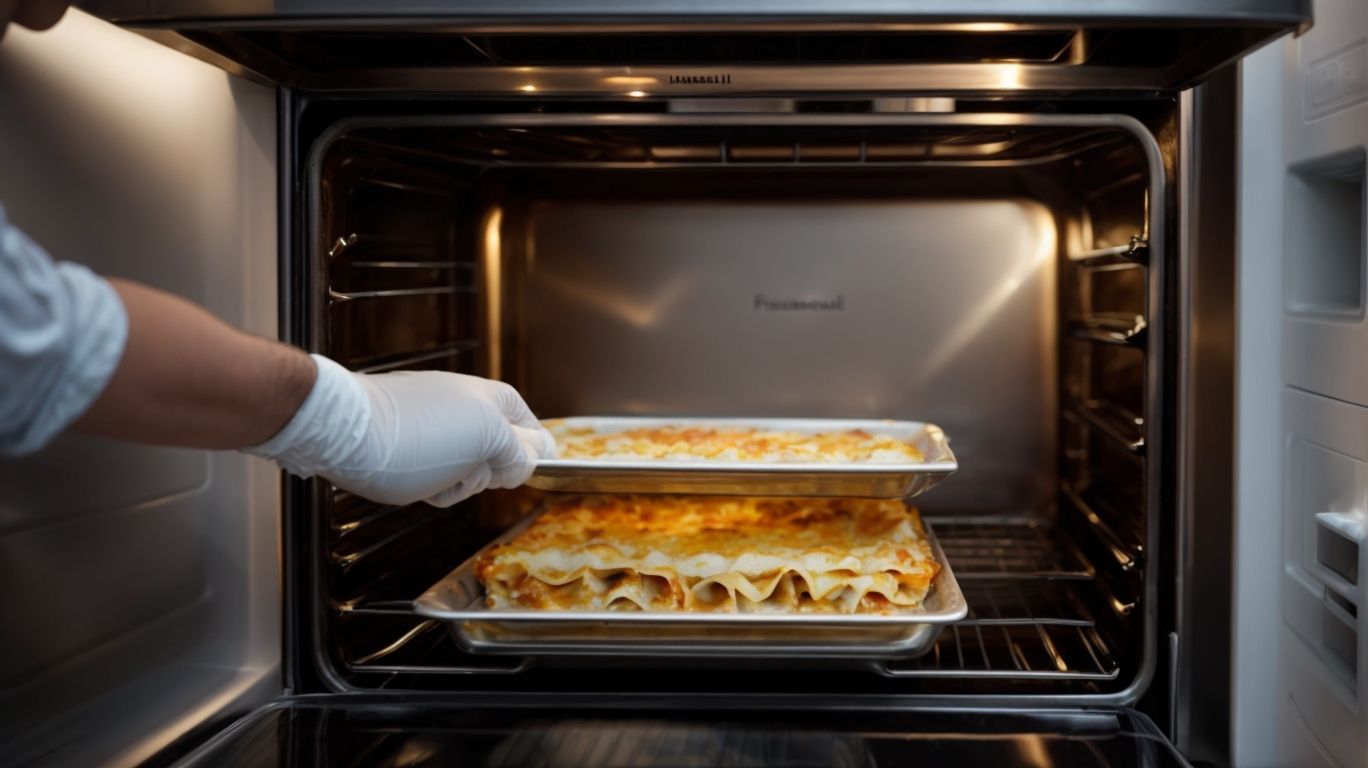How to Bake Lasagna From Frozen?
Are you a fan of the classic Italian comfort food, lasagna?
Have you ever wondered how to prepare and bake a delicious lasagna straight from the freezer?
This article covers everything you need to know about baking lasagna from frozen.
From traditional ingredients to step-by-step instructions and tips for perfecting your frozen lasagna dish, we’ve got you covered.
Stay tuned to learn all the secrets to making a mouthwatering lasagna that will have your taste buds singing!
Key Takeaways:
What is Lasagna?
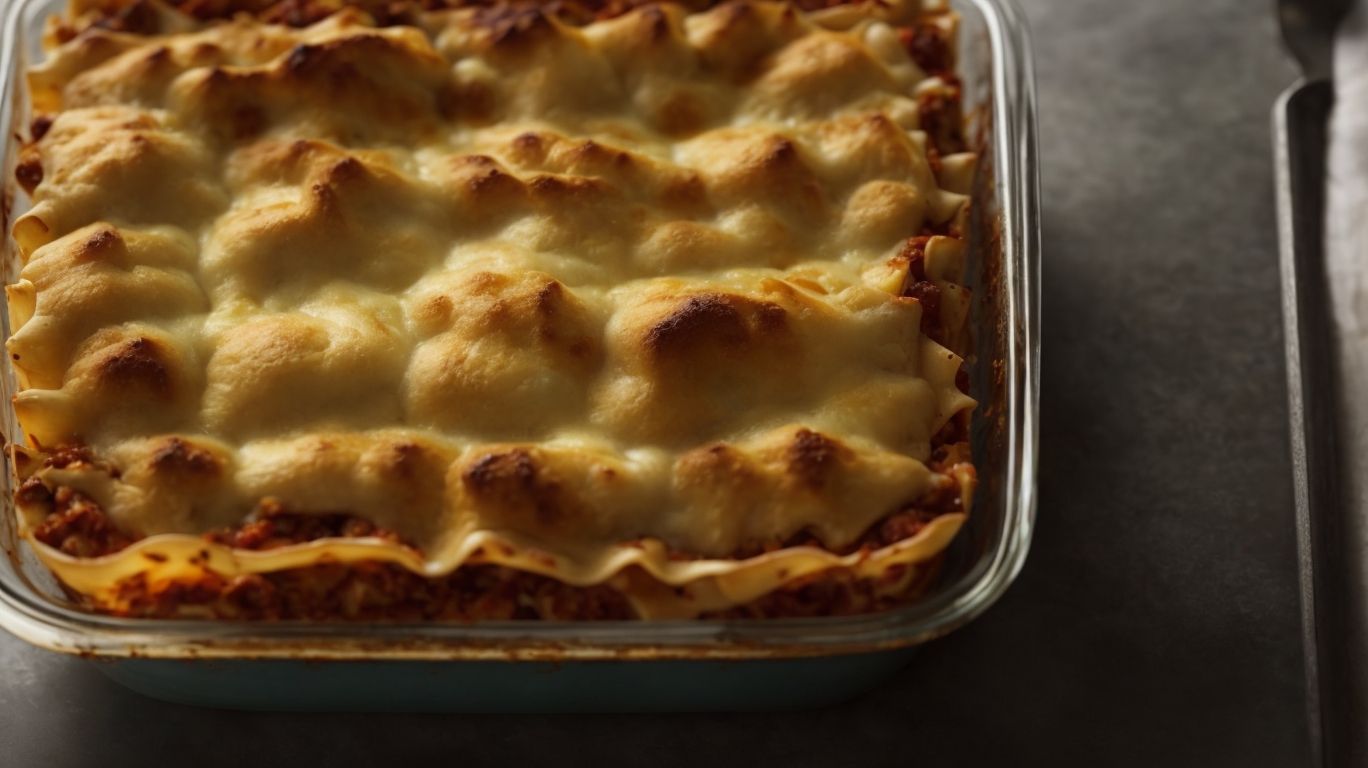
Credits: Poormet.Com – Philip Lopez
Lasagna is a classic Italian dish known for its layers of pasta, rich marinara sauce, creamy ricotta cheese, savory meat, and gooey mozzarella, creating a harmonious blend of flavors.
Lasagna, which has become a staple in Italian cuisine, traces its origins back to Ancient Rome, where the first recorded recipe for a dish resembling modern lasagna appeared. Originally, lasagna was not made with tomato-based sauces as tomatoes were not yet introduced in Europe. Instead, it featured layers of pasta, cheese, and meat, resembling a more primitive version of today’s beloved recipe.
Over time, lasagna evolved, and when tomatoes arrived in Europe from the New World, they were incorporated into the dish, transforming it into the familiar recipe we know today. The popularity of lasagna quickly spread beyond Italy, becoming a beloved comfort food in many parts of the world.
What are the Traditional Ingredients for Lasagna?
The traditional ingredients for lasagna include layers of lasagna noodles, marinara sauce, ricotta and mozzarella cheese, seasoned meat like sausage or ground beef, all baked to perfection in a deep pan.
Each component plays a crucial role in creating the rich and hearty flavors that define this classic dish. The lasagna noodles provide a sturdy base, while the marinara sauce infuses a burst of tangy tomato goodness. The blend of ricotta and mozzarella cheese adds a creamy and cheesy layer that binds everything together.
In terms of the meat, sausage lends a bold and savory kick, whereas ground beef offers a more subtle flavor profile. For those looking to switch things up, options like turkey or even vegetarian alternatives can be delightful substitutions.
How to Prepare Frozen Lasagna for Baking?
Preparing frozen lasagna for baking involves ensuring that the lasagna is properly thawed, selecting a suitable baking dish, and preheating the oven for a delicious and convenient meal.
Thawing the frozen lasagna can be done overnight in the refrigerator for even results, but if you’re short on time, you can use the microwave on a defrost setting.
Once thawed, carefully layer the lasagna in your chosen baking dish, starting with a generous spread of cheese and sauce between the pasta sheets.
When it’s time to bake, cover the dish with foil to prevent excessive browning and moisture loss, ensuring a moist and flavorful end result. A sprinkle of cheese on top during the final minutes can add that perfect golden touch.
What Type of Lasagna Can Be Frozen?
Lasagna types that can be successfully frozen include traditional meat lasagna, vegetable lasagna, and even creamy spinach lasagna, offering a convenient make-ahead meal option for busy days.
In terms of freezing your lasagna, the optimal method is to bake it first, allow it to cool completely, and then portion it into individual servings. This way, you can easily reheat one portion at a time without having to defrost the whole pan. Consider using high-quality ingredients like rich marinara sauce, a blend of flavorful cheeses, and hearty noodles to ensure that your lasagna retains its delicious taste and comforting texture after freezing.
How to Properly Thaw Frozen Lasagna?
Properly thawing frozen lasagna involves transferring it from the freezer to the fridge overnight to ensure even thawing, allowing the flavors to meld together for a delicious meal when baked.
For those times when you forget to plan ahead, there are a couple of alternative methods to safely thaw your frozen lasagna. One option is to use the microwave on a defrost setting, but be cautious as this can start cooking the edges, affecting the overall texture. Another way is to immerse the tightly wrapped lasagna in cold water, changing the water every 30 minutes to speed up the process while maintaining food safety.
Remember to follow safety precautions when thawing lasagna to prevent the growth of harmful bacteria. Once thawed, keep the lasagna refrigerated until ready to bake to maintain its quality. Preheat your oven to the recommended temperature specified on the packaging, then cover the lasagna with foil to prevent excessive browning before uncovering it towards the end for a beautifully golden, bubbling meal.
What are the Steps to Bake Frozen Lasagna?
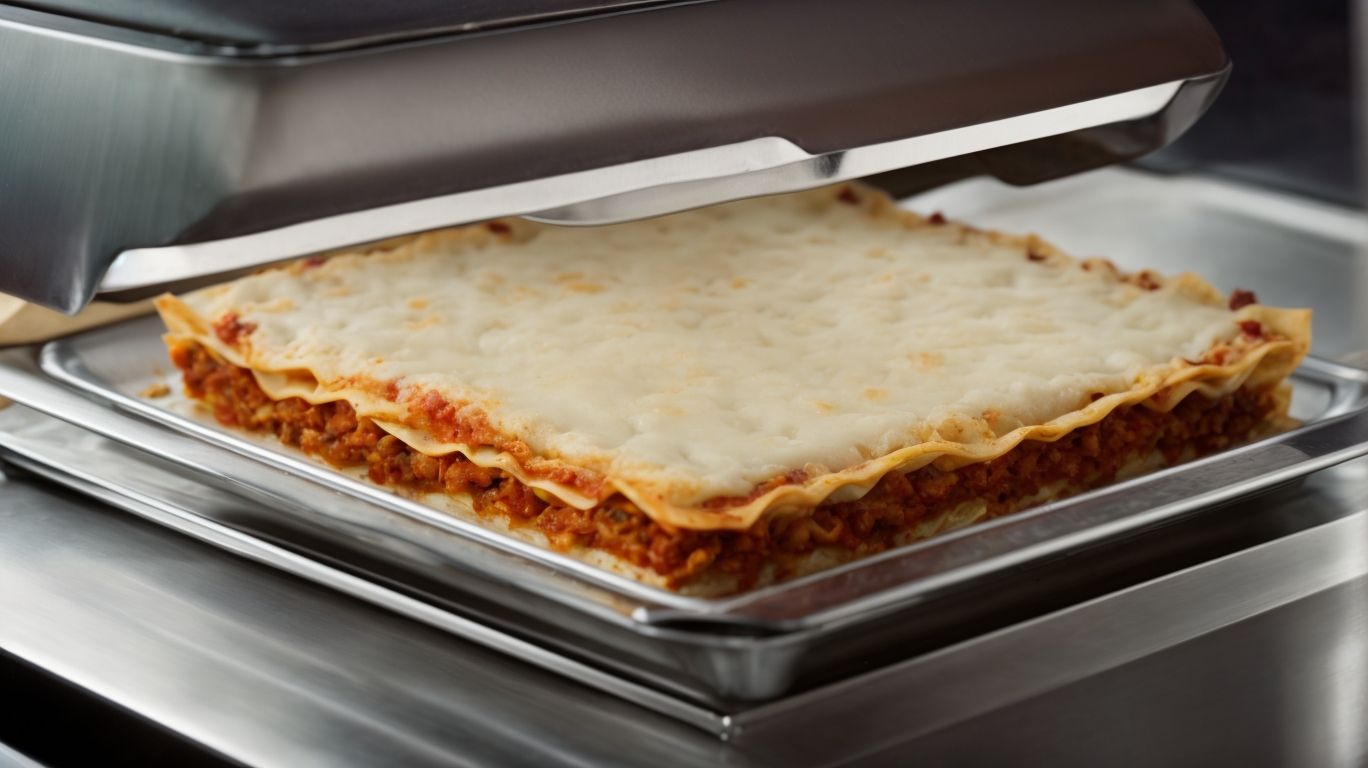
Credits: Poormet.Com – Vincent Campbell
Baking frozen lasagna involves preheating the oven, preparing the baking dish, adding the thawed lasagna layers, covering them with foil, and baking until the cheese is bubbly and the meat is cooked through.
Once the oven is preheated to the recommended temperature, it’s time to get the baking dish ready. This usually involves greasing the dish to prevent sticking, ensuring an easy cleanup later.
- Start by placing a layer of the thawed lasagna sheets at the bottom of the dish, spreading a generous amount of sauce over each layer to keep the lasagna moist and flavorful.
- After layering the lasagna sheets, sprinkle a generous amount of shredded cheese evenly on top.
Pro Tip: Make sure to tightly cover the dish with foil before placing it in the oven. The foil helps trap steam and heat, ensuring the lasagna cooks evenly and retains its moisture. Follow the recommended baking time for frozen lasagna, typically around 45-60 minutes, until the cheese is golden and bubbling.
Once the timer beeps, carefully remove the foil and let the lasagna rest for a few minutes before serving. This allows the layers to set and makes it easier to cut neat portions. Serve the piping hot lasagna with a fresh salad or garlic bread for a hearty, satisfying meal that’s sure to please everyone at the table.
Step 1: Preheat the Oven
The first step in baking frozen lasagna is to preheat the oven to the specified temperature recommended in the recipe, ensuring even cooking and a perfectly baked dish.
Preheating the oven is a crucial step in the baking process, as it allows the oven to reach the desired temperature before placing the lasagna inside. This initial heat ensures that the dish starts cooking immediately, leading to more consistent results throughout. Having the oven at the right temperature from the start helps in cooking the lasagna evenly and thoroughly, preventing any undercooked or overcooked areas.
Optimal oven temperatures vary depending on the recipe and type of lasagna. Typically, a temperature between 375°F to 400°F works well for most frozen lasagnas. Adjusting the temperature according to the recipe specifications is key to achieving that perfectly baked texture and flavor.
Step 2: Prepare the Baking Dish
Preparing the baking dish for frozen lasagna involves greasing the pan, adding a layer of sauce, placing the lasagna sheets, spreading the cheese and meat mixture, and repeating the layers for a delicious outcome.
After layering the lasagna sheets with the cheese and meat mixture, ensure to cover the top layer generously with cheese for that perfect gooey finish. Place the prepared dish in a preheated oven at the specified temperature, allowing the lasagna to bake until it’s golden and bubbling.
For even cooking, consider covering the dish with foil for the initial baking time, then remove the foil towards the end to achieve that crispy top layer. Let the lasagna rest for a few minutes before serving to allow it to set and make the first slice easier.
Step 3: Add the Thawed Lasagna to the Dish
Adding the thawed lasagna to the prepared baking dish involves carefully transferring the layers of lasagna sheets, sauce, cheese, and meat mixture, ensuring even distribution for a balanced and flavorful dish.
Start by ladling a generous amount of sauce onto the bottom of the baking dish to create a moist base for the lasagna. Spread it evenly to prevent any dry spots.
Next, place a layer of lasagna sheets over the sauce, ensuring they cover the bottom of the dish completely. Break the sheets if needed to fit the size of the dish.
Follow this with a portion of the meat mixture, spreading it out evenly over the lasagna sheets to create a savory layer.
After the meat, sprinkle a layer of cheese, ensuring it covers the entire surface to add richness and flavor.
Step 4: Cover with Foil
Covering the lasagna with foil before baking helps retain moisture, prevents excessive browning, and allows the flavors to meld together, resulting in a perfectly cooked and delicious dish.
When you cover the lasagna with foil, it acts as a protective barrier, keeping the cheese from becoming dry and rubbery. The foil traps the steam released during baking, which ensures that the noodles cook evenly and stay tender. Another benefit is that it helps the sauce stay moist and flavorful. Remember, if you want some crispy edges, you can always remove the foil during the last few minutes of baking to achieve that perfect balance of textures.
Step 5: Bake in the Oven
Baking the assembled lasagna in the preheated oven allows the flavors to meld, the cheese to melt, and the meat to cook through, resulting in a bubbling and aromatic dish ready to be enjoyed.
When baking your lasagna, the recommended temperature is typically around 375°F to 400°F, ensuring that the meat cooks thoroughly and the cheese becomes irresistibly gooey. The baking time typically ranges from 45 minutes to an hour, but it’s essential to keep an eye on it. A telltale sign that your lasagna is ready is the bubbly, golden-brown crust on top, hinting at the rich flavors within. It’s all about that perfect balance of tender noodles, flavorful sauce, and perfectly melted cheese. Trust your senses, and your lasagna will turn out just right!
How Long Does it Take to Bake Frozen Lasagna?
The baking time for frozen lasagna typically ranges between 60 to 90 minutes, depending on the oven temperature, dish size, and the thickness of the lasagna layers, ensuring a well-cooked and flavorful outcome.
Factors such as the convection settings of your oven, the initial temperature of the lasagna when placed in the oven, and even the altitude of your location can impact the required baking time. Adjusting the cooking time for a thicker lasagna by covering it with foil initially and then removing it towards the end can help ensure even cooking. Keep an eye out for bubbling sauce around the edges and a golden-brown, crispy cheese crust as visual cues for doneness. Remember, letting the lasagna rest for a few minutes after baking allows the flavors to meld together for a more delicious final dish.
How to Tell if Frozen Lasagna is Fully Cooked?
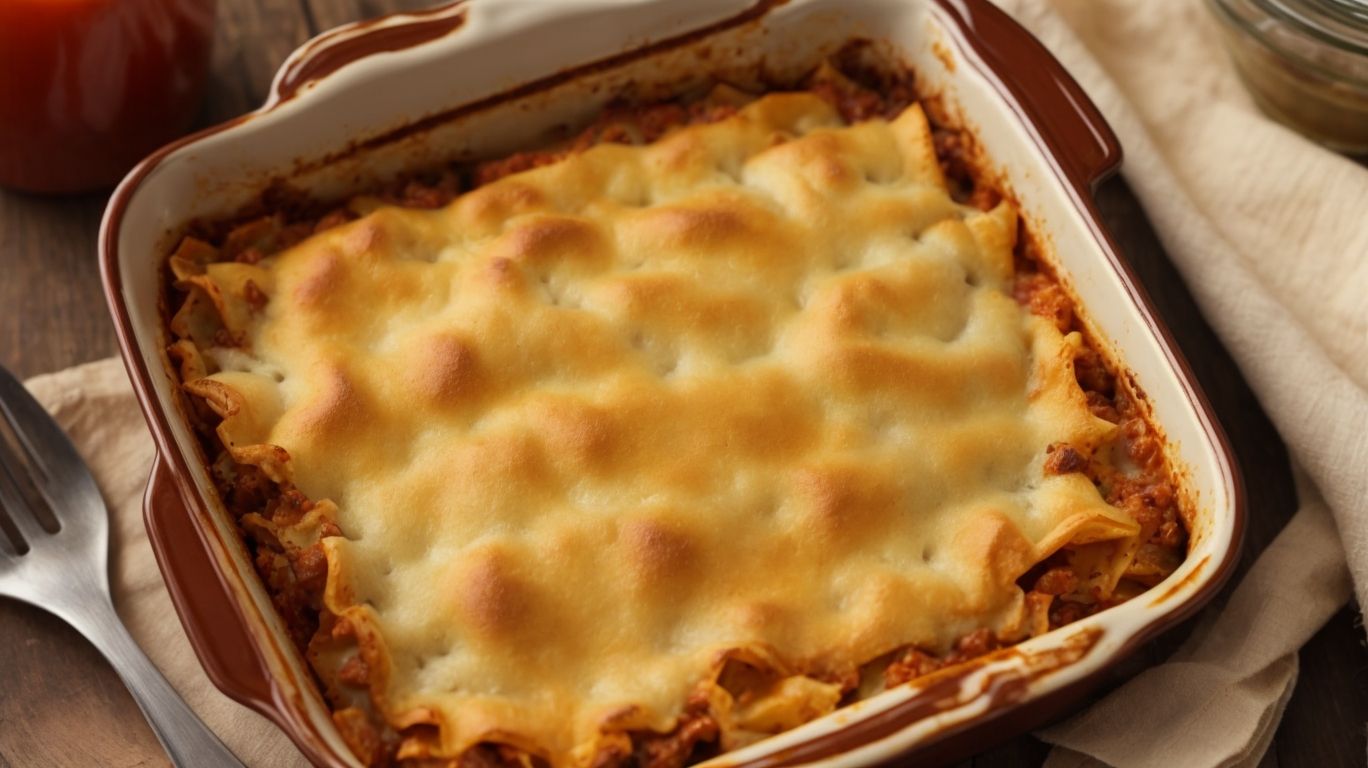
Credits: Poormet.Com – Nathan Young
To determine if frozen lasagna is fully cooked, look for bubbling cheese, a golden brown top, and ensure that the meat is thoroughly cooked through, providing visual and taste cues for readiness.
You can check the temperature in the center of the lasagna to ensure it has reached at least 165°F (74°C) for food safety. A meat thermometer can be handy for this task, piercing through the layers to check the heat distribution.
Checking the sauce consistency is also crucial; it should be hot and bubbly, ensuring that it has cooked properly. Remember, the aroma is another good indicator of doneness; a fragrant, fully cooked lasagna will have you longing for that first bite.
What are Some Tips for Baking Frozen Lasagna?
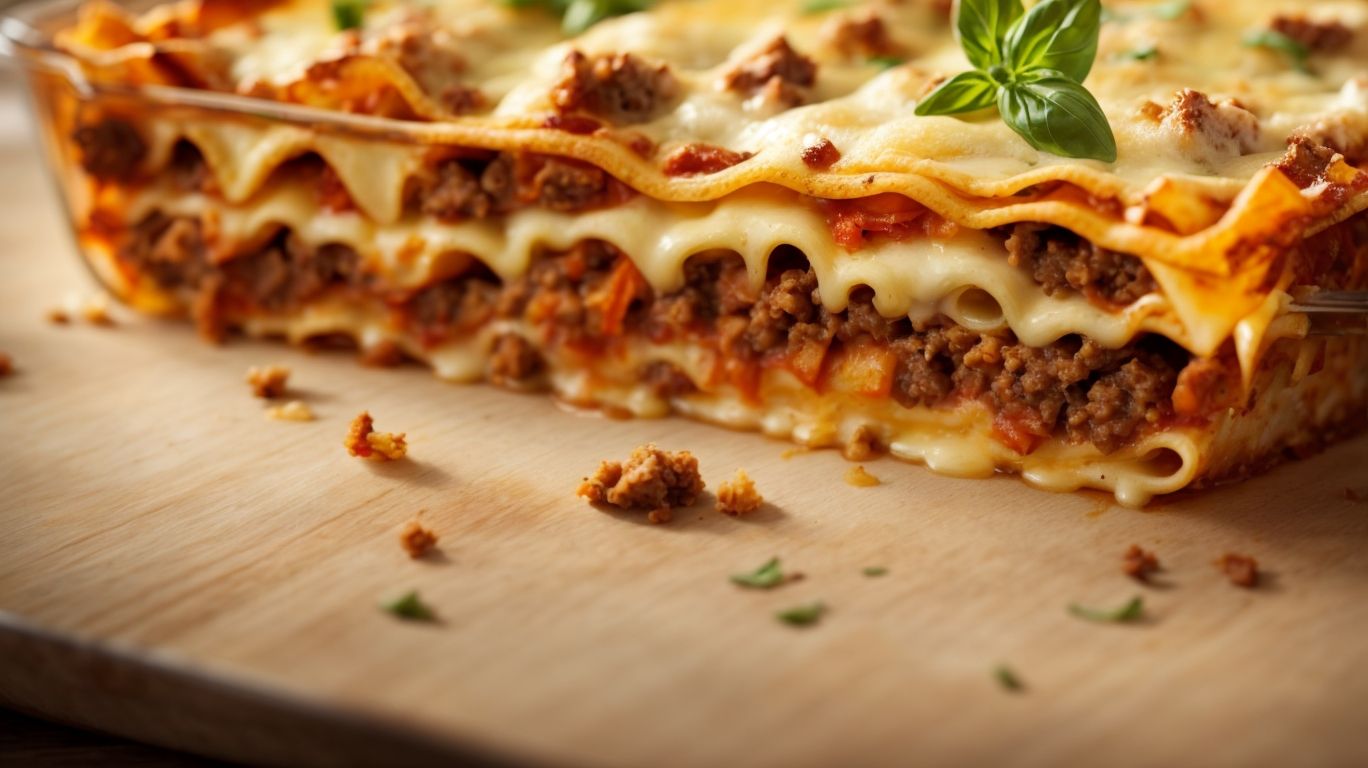
Credits: Poormet.Com – Jeremy Clark
For optimal results when baking frozen lasagna, consider using high-quality ingredients, adding extra moisture to prevent drying out, and incorporating delicious toppings for enhanced flavor and presentation.
When selecting ingredients for your frozen lasagna, opt for a good-quality pasta that will hold up well during baking, a flavorful meat sauce that complements the dish, and a rich cheese blend for that gooey, melty goodness. Meat, cheese, and sauce are the stars here! To amp up the moisture content, consider adding a layer of creamy ricotta or a drizzle of bechamel sauce between the pasta sheets.
- For toppings, experiment with a sprinkle of Parmesan for a crispy top or some fresh herbs for a burst of freshness.
Once baked, let the lasagna rest for a few minutes to ensure it stays intact when serving.”
Tip 1: Use High-Quality Ingredients
Using high-quality ingredients such as premium cheeses, fresh meats, and flavorful sauces can elevate the taste and texture of the baked lasagna, ensuring a delicious and satisfying meal.
In terms of sourcing ingredients for your lasagna, it’s all about selecting the best of the best. Start with cheeses like aged Parmesan or creamy ricotta to add depth and richness to each layer. Opting for fresh, locally sourced meats will guarantee a robust flavor profile, whether it’s indulgent ground beef or savory Italian sausage.
- For the sauce, homemade tomato sauce with ripe, garden-fresh tomatoes or a rich bechamel sauce can truly make a difference in the overall taste.
Remember, the key to a stellar baked lasagna lies in the quality of its components. Each mouthful should burst with flavors that come from top-notch ingredients, making it a culinary experience to savor.
Tip 2: Add Extra Moisture to Prevent Drying Out
To prevent lasagna from drying out during baking, consider adding extra moisture through additional sauce, a drizzle of olive oil, or a sprinkling of broth to maintain the dish’s texture and flavor.
Moisture is key in baked lasagna as it plays a crucial role in ensuring that every layer is succulent and delicious. The cheese, meat, and sauce need that extra bit of moisture to blend harmoniously, creating a melt-in-your-mouth experience.
For those looking to bump up the moisture levels, consider adding extra sauce. This not only enhances the flavor profile but also keeps the lasagna juicy. Another handy tip is to cover the dish with foil in the initial baking stages to trap moisture and prevent excessive evaporation.
Tip 3: Add Toppings for Extra Flavor
Enhance the flavor profile of baked lasagna by adding delicious toppings such as fresh herbs, grated Parmesan cheese, or a drizzle of balsamic glaze, creating a visually appealing and mouthwatering final dish.
In terms of creating a truly memorable baked lasagna, the tips to take it to the next level are endless. Consider adding a layer of crispy bacon crumbles or a sprinkle of toasted breadcrumbs for that perfect crunch. Another fantastic idea is to mix things up with different types of meat – whether it’s succulent Italian sausage, tender shredded chicken, or even flavorful meatballs. The key is to experiment and find the combination that tantalizes your taste buds the most!
Conclusion
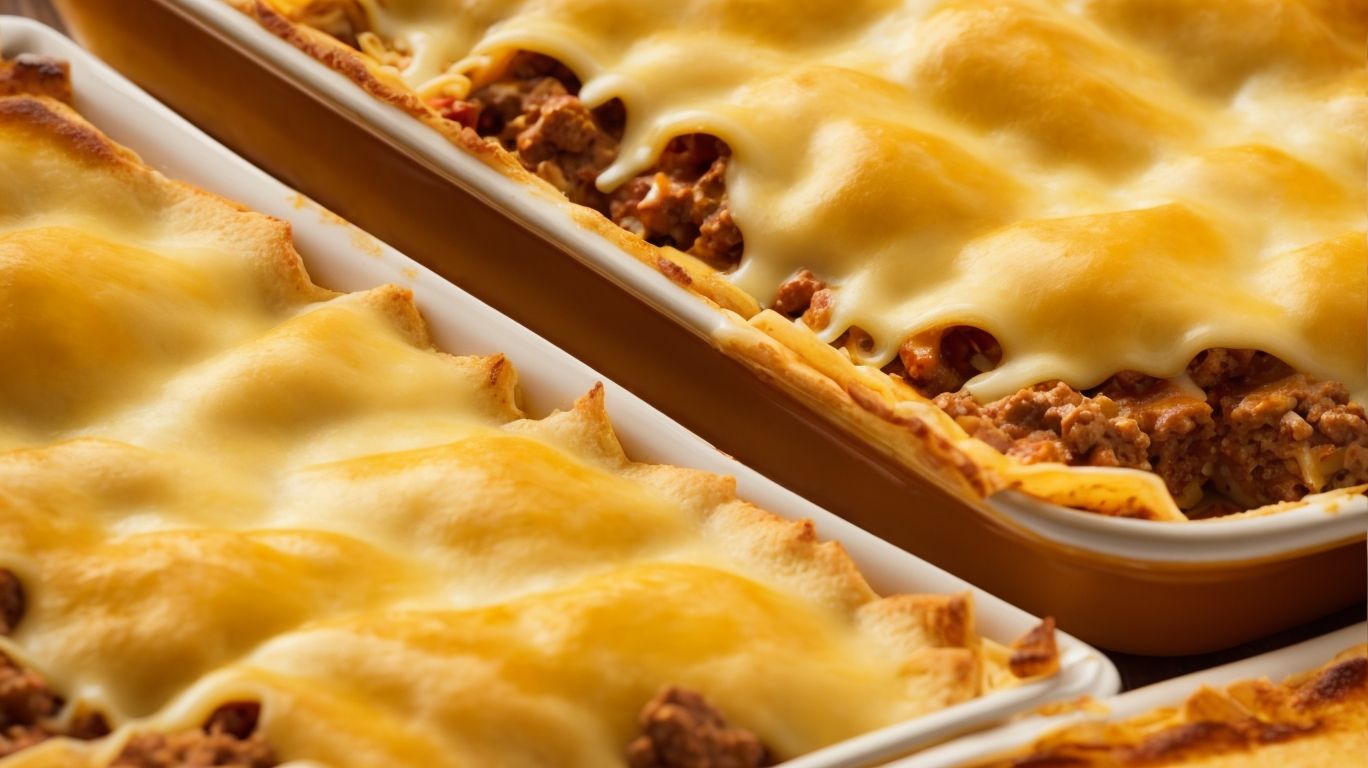
Credits: Poormet.Com – Jason Wilson
Baking frozen lasagna is a convenient and delicious way to enjoy a homemade meal with layers of cheesy goodness, rich sauce, and perfectly cooked meat, providing a satisfying culinary experience.
When you pop that frozen lasagna in the oven, magic happens – the cheese melts into gooey perfection, the sauce bubbles with flavors, and the meat reaches that ideal tenderness. The best part? You don’t have to spend hours prepping and cooking; it’s a quick fix for your hunger pangs.
Whether it’s a hectic weekday or a lazy weekend, having a crispy-edged, bubbling-hot lasagna on your plate always feels like a small luxury. Plus, the leftovers taste even better the next day, making it a dish that keeps on giving!
Frequently Asked Questions
What is the best way to bake lasagna from frozen?
The best way to bake lasagna from frozen is to let it thaw in the refrigerator for 24 hours before baking. This will ensure that it cooks evenly and the flavors have time to meld together.
Can I bake lasagna from frozen without thawing?
Yes, you can bake lasagna from frozen without thawing. However, it will take longer to cook and the results may not be as good as if you had let it thaw first.
How long does it take to bake lasagna from frozen?
The cooking time for baking lasagna from frozen can vary depending on the size of the dish, but on average it takes about 1 1/2 to 2 hours at 375 degrees Fahrenheit.
What temperature should I bake lasagna from frozen?
The recommended temperature for baking lasagna from frozen is 375 degrees Fahrenheit. This will ensure that the lasagna cooks evenly and reaches a safe internal temperature of 165 degrees Fahrenheit.
Can I assemble lasagna and freeze it before baking?
Yes, you can assemble lasagna and freeze it before baking. This is a great way to save time and have a ready-to-go meal in the freezer for busy days. Just make sure to use a freezer-safe dish and wrap it tightly with foil.
How do I know when lasagna is fully cooked?
You can tell when lasagna is fully cooked when the top is golden brown and the edges are bubbling. You can also insert a knife into the center and if it comes out clean, it’s done. For food safety, the internal temperature should reach 165 degrees Fahrenheit.

